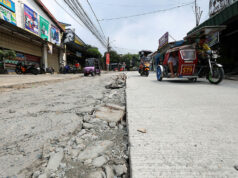Outlook for rural banks positive
RURAL BANKS remain strong and profitable this year despite the closure of several players, the Bangko Sentral ng Pilipinas (BSP) said, with lenders actively looking to tap digital solutions to expand their operations.
“The industry outlook of rural banks remains positive,” the BSP said in a statement sent over the weekend.
Citing preliminary results of the maiden Banking Sector Outlook Survey, the central bank said the industry “remains on solid footing” and continues to grow, with rural bank assets now at P216.7 billion as of end-March, or 8.3% higher from the same period in 2017.
These small lenders also held on to capital worth 19.1% of their risk-weighted assets, well above the 10% minimum capital adequacy ratio imposed by the central bank.
Rural banks also booked a cumulative net income of P2.9 billion as of the first quarter while return on equity also stood at 7.1%, according to BSP data.
The Monetary Board has shut down 10 rural banks so far this year after they were found unviable to remain in business, in keeping with their mandate of overseeing the Philippine banking system.
The BSP said rural banks continue to fulfill its role in supporting countryside development by lending to communities, farmers and small businesses, which are often outside the purview of the bigger universal and commercial banks.
The central bank pointed out that these players have been exceeding credit quotas for agri-agra lending as well as for micro, small, and medium enterprises.
Total loans granted reached P135.299 billion as of March, up 5.4% from the P128.324 billion the year prior.
Rural bank networks also stand strong with 2,800 branches across the country as of end-July, with lenders looking to scale up further through the use of cash agents as well as cloud-based banking services to broaden their reach.
“[T]he top three strategic priorities of the rural banks over the next two years are to grow the business, protect the bank, and to optimize available technology,” the BSP said, adding that a number of lenders have also gotten on board the electronic payment platforms rolled out by the central bank. — Melissa Luz T. Lopez



